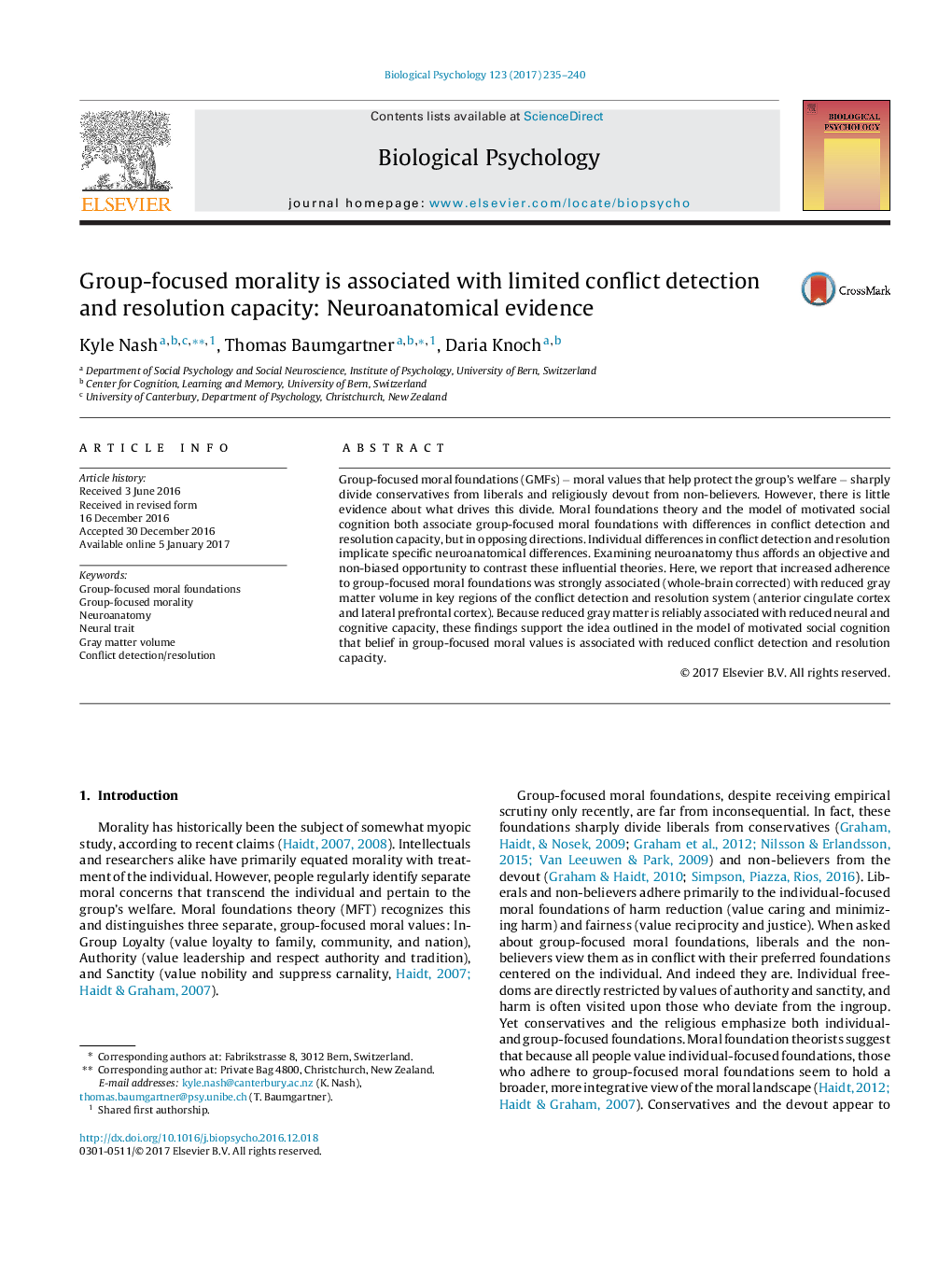| کد مقاله | کد نشریه | سال انتشار | مقاله انگلیسی | نسخه تمام متن |
|---|---|---|---|---|
| 5040544 | 1473851 | 2017 | 6 صفحه PDF | دانلود رایگان |
• We examined the neuroanatomy of belief in group-focused moral foundations (GMFs).
• Belief in GMFs are related to reduced ACC and LPFC cortical volume.
• ACC and LPFC are key regions in a conflict detection/resolution system.
• Conflict detection/resolution capacity helps explain belief in GMFs.
Group-focused moral foundations (GMFs) − moral values that help protect the group’s welfare − sharply divide conservatives from liberals and religiously devout from non-believers. However, there is little evidence about what drives this divide. Moral foundations theory and the model of motivated social cognition both associate group-focused moral foundations with differences in conflict detection and resolution capacity, but in opposing directions. Individual differences in conflict detection and resolution implicate specific neuroanatomical differences. Examining neuroanatomy thus affords an objective and non-biased opportunity to contrast these influential theories. Here, we report that increased adherence to group-focused moral foundations was strongly associated (whole-brain corrected) with reduced gray matter volume in key regions of the conflict detection and resolution system (anterior cingulate cortex and lateral prefrontal cortex). Because reduced gray matter is reliably associated with reduced neural and cognitive capacity, these findings support the idea outlined in the model of motivated social cognition that belief in group-focused moral values is associated with reduced conflict detection and resolution capacity.
Journal: Biological Psychology - Volume 123, February 2017, Pages 235–240
